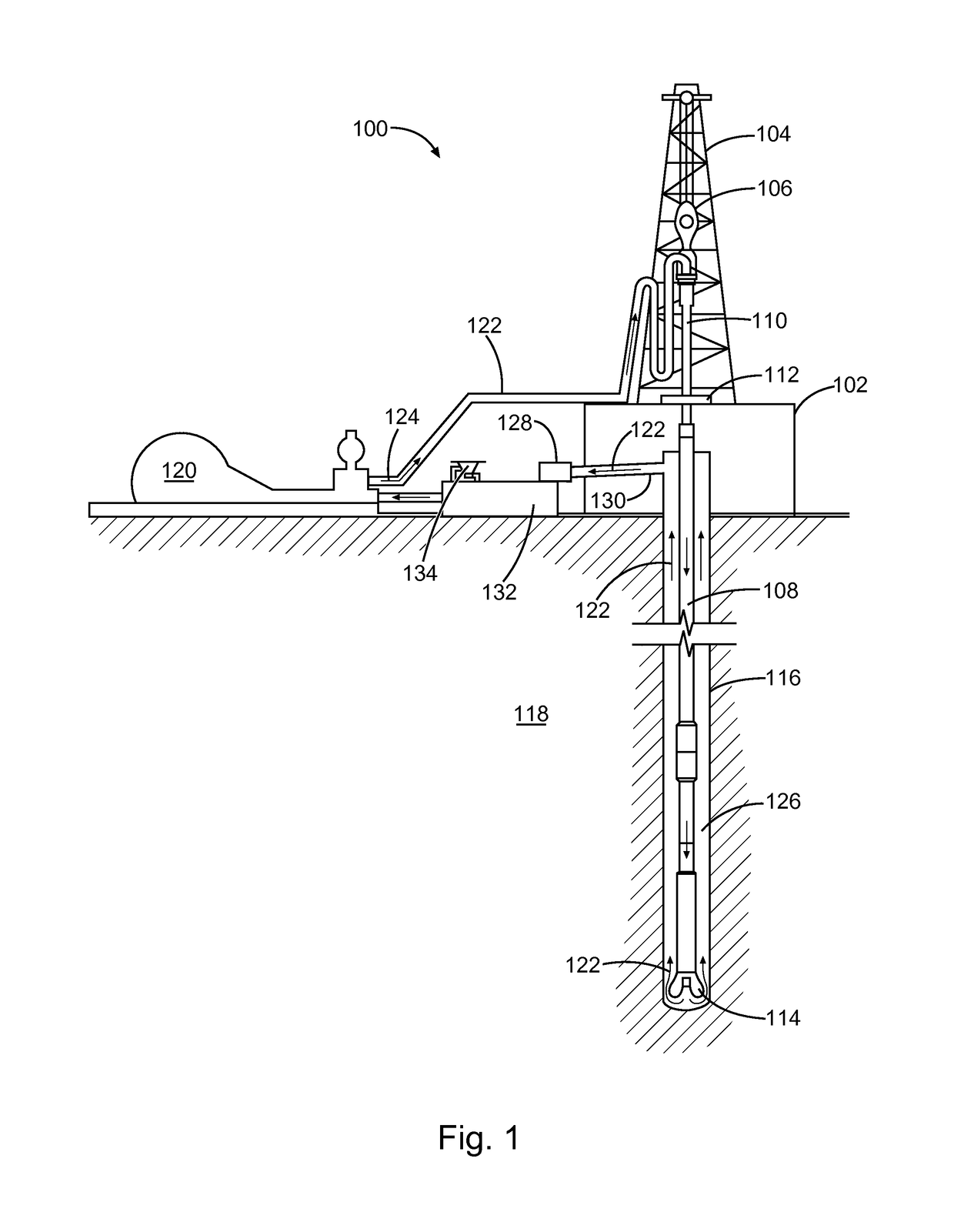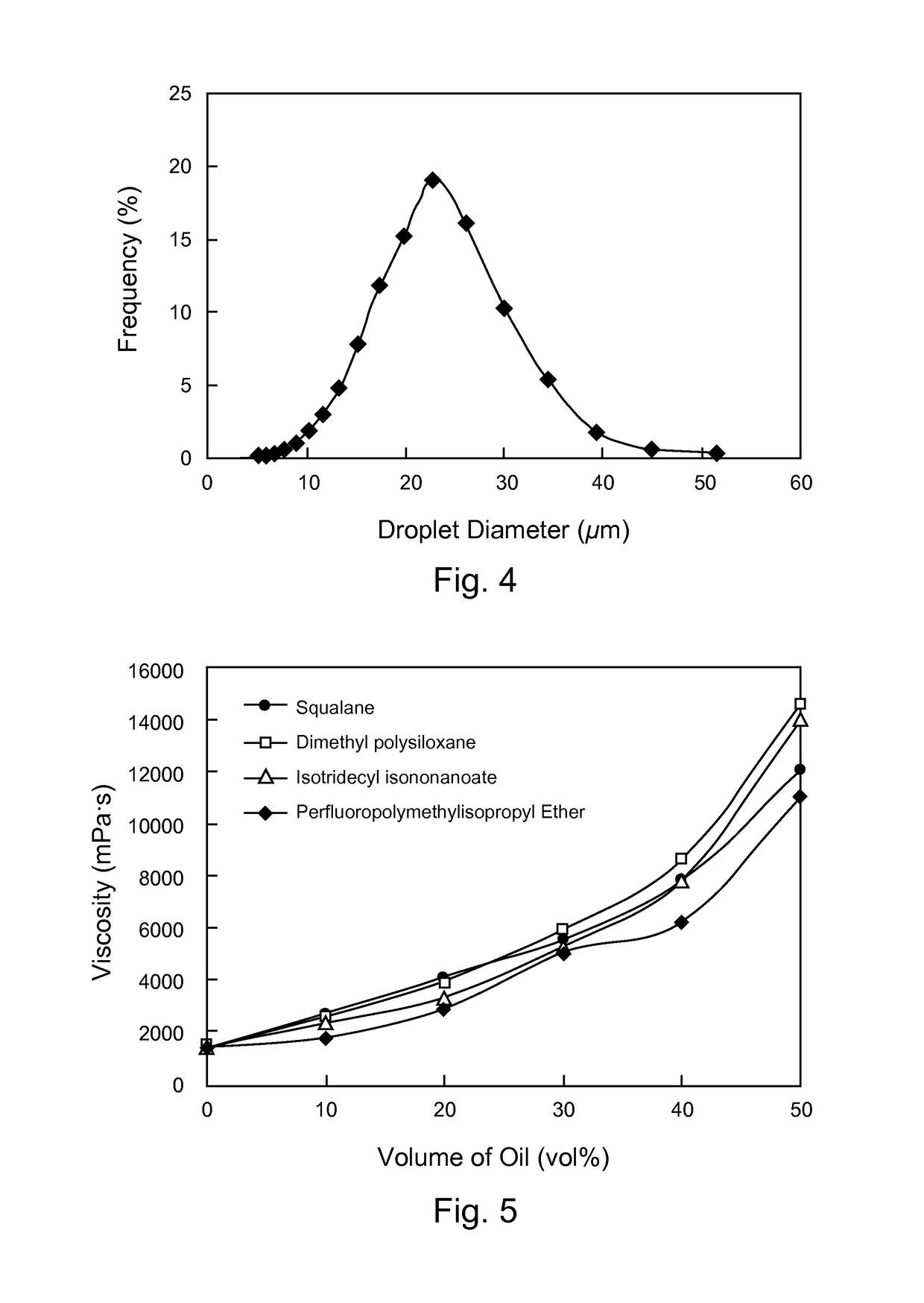Hydrophobically and hydrophilically modified polysaccharides and methods of using the same for treatment of a subterranean formation
a technology of hydrophobic and hydrophilic modification and subterranean formation, which is applied in the direction of drilling composition, chemistry apparatus and processes, and well accessories, etc., can solve the problems of large more dominant fractures, low efficiency preparation of viscous materials, and high transportation costs, so as to increase the viscosity of the downhole fluid, the effect of increasing the viscosity and increasing the viscosity
- Summary
- Abstract
- Description
- Claims
- Application Information
AI Technical Summary
Benefits of technology
Problems solved by technology
Method used
Image
Examples
example 1
roperties
General.
[0169]Water-Soluble Polymers.
[0170]The water-soluble polymers used in this Example were: (1) hydrophilically-hydrophobically modified hydroxyethylcellulose (HHM-HEC), (2) alkyl chain-bearing HEC (R-HEC), (3) sulfonic acid-bearing HEC (S-HEC), (4) HEC (HEC QP-IOOMH, Union Carbide Corporation).
[0171]
TABLE 1HHM-HEC used in this Example.Number of alkyl chainNumber of sulfonic acidmoieties (permoieties (perSample namemonosaccharide unit)monosaccharide unit)HHM-HEC(A)0.00640.11HHM-HEC(B)0.00620.25HHM-HEC(C)0.00330.21
[0172]The structures of compounds (2) to (4) are shown below.
[0173]
[0174]The compounds (1)-(3) were synthesized from the HEC (4) with stearylglycidyl ether and 3-chloro-2-hydroxypropanesulfonic acid under alkaline conditions. For compound (2), only alkyl chain moieties were introduced, and for compound (3), only sulfonic acid moieties. Compound (1) has both alkyl chain and sulfonic acid moieties. The HEC (4) had molecular weight of about 1,500,000.
[0175]Oils.
[...
example 1.1
lsions
Example 1.1.1. O / W Emulsions Stabilized by HHM-HEC
[0187]The appearance of the O / W emulsions is shown in FIG. 2, which shows a photograph of emulsions of HEC derivatives. The oil phase is 16 wt % squalane, and the water phase is an aqueous solution of HHM-HEC, R-HEC, S-HEC, or HEC at 0.5 wt %. Apparent creaming was observed for the emulsions of HEC and S-HEC. Moreover, oil phase separated out at the surface. In contrast, emulsions of HHM-HEC and R-HEC were stable. Viscosity and mean particle diameter are listed in Table 2. Reproduction among the emulsion samples using different batches of HHM-HEC has an error of 9.4% for viscosity and 4.6% for median particle size.
[0188]
TABLE 2Viscosity and particle size of O / W emulsions of HEC derivatives.HECS-HECR-HECHHM-HECViscosity1600 ± 600140 ± 509800 ± 24006400 ± 600(mPa · s)Particle size46.56 ± 3.2 47.8 ± 3.032.9 ± 1.4 23.6 ± 1.1(μm)
[0189]A photomicrograph image of the emulsion of the HHM-HEC / water / squalane system is shown in FIG. 3. Th...
example 1.1.2
on the Viscosity of Emulsions of HHM-HEC
[0190]FIG. 5 shows the effect of oil on the viscosity of emulsions. Four kinds of oil, squalane, dimethylpolysiloxane, isotridecyl isononanoate, and perfluoropolymethyl isopropyl ether, were used as the oil phase in the emulsion. The concentration of HHM-HEC in water was constant, [HHM-HEC]=0.5 (wt %).
PUM
| Property | Measurement | Unit |
|---|---|---|
| yield strength | aaaaa | aaaaa |
| temperature | aaaaa | aaaaa |
| viscosity | aaaaa | aaaaa |
Abstract
Description
Claims
Application Information
 Login to View More
Login to View More - R&D
- Intellectual Property
- Life Sciences
- Materials
- Tech Scout
- Unparalleled Data Quality
- Higher Quality Content
- 60% Fewer Hallucinations
Browse by: Latest US Patents, China's latest patents, Technical Efficacy Thesaurus, Application Domain, Technology Topic, Popular Technical Reports.
© 2025 PatSnap. All rights reserved.Legal|Privacy policy|Modern Slavery Act Transparency Statement|Sitemap|About US| Contact US: help@patsnap.com



